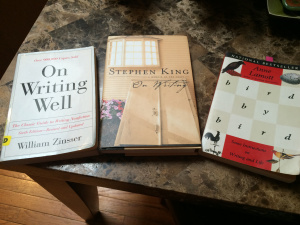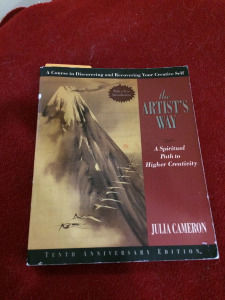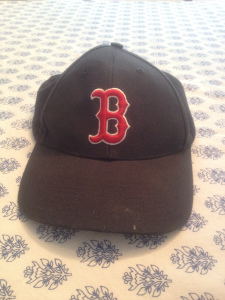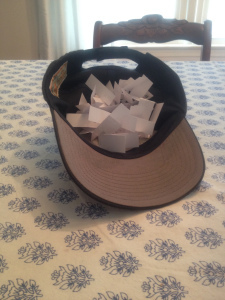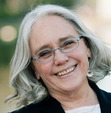Edith Maxwell's Blog, page 273
November 5, 2014
Wicked Wednesday: Writes of Passage
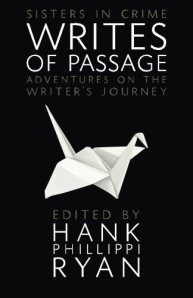 In 2013, when the wonderful Hank Phillippi Ryan was President of Sisters in Crime, she decided her legacy would be a book of essays. The idea was that writers would share their experiences, reach out and support one another like a warm and comforting embrace.
In 2013, when the wonderful Hank Phillippi Ryan was President of Sisters in Crime, she decided her legacy would be a book of essays. The idea was that writers would share their experiences, reach out and support one another like a warm and comforting embrace.
Working with co-editor Elaine Will Sparber, Hank reached out to members of Sisters in Crime all over the country, from every corner of the genre and at all phases of their careers. The result is a little book called Writes of Passage: Adventures on the Writer’s Journey, that contains sixty essays (#60secrets) where writers tell it like it is. The central message of the book is, “You are not alone.”
Writes of Passage is now available from Henery Press in paper and ebook form, at all the usual outlets.
Several of the Wicked Cozies have essays in the book. We thought today we’d each pick an essay that spoke to us from the collection.
Barb: I laughed out when I read Lori Roy’s essay, “Hard Work and Working Hard.” In it, she talks about how the hyper-organized style she learned as a CPA has never worked in her fiction writing. She can’t write from an outline and research is piled haphazardly around her office. The essay reminded me of the book Agatha Christie’s Secret Notebooks, by John Curran. (I write about it here.) You’d think Dame Agatha, Queen of Plot, would have been strictly organized, but Curran writes that Christie “thrived mentally on chaos, it stimulated her more than neat order; rigidity stifled her creative process.” But Lori’s essay made me laugh out loud because I had just said to my husband that my former profession as a Chief Operating Officer was the worst possible preparation for mystery writing. As COO, my job was usually to unkink the kinks and find the straightest line between two points, to take the obscure and make it transparent. Applied to mystery writing, the result would be a one chapter book. “A guy was killed. It was obviously so and so. He was swiftly arrested. The End.” I struggle against that impulse every day.
 Liz: So many of these wonderful essays resonated with me, but as many of you know, I have procrastination issues. So Clea Simon’s “The Zen of Procrastination” spoke to me loud and clear. Her simple truth is also mine: “Somehow, as the deadline for each new book approaches, I find myself caught up on the most mundane of household chores – and then belatedly bashing out the prose at eight, nine or ten o’clock at night.” I struggle with this too, although I can – and often do – excuse my procrastination by citing the demands of my day job, but it’s the same difference. What I liked about this essay is Clea’s attempts for a Zen acceptance of her methods, such as the working out of the plot hole during the laundry cycles. I, too, am trying to be kinder to myself if I feel I have to do something instead of write at that exact moment, and channel the time more productively at least in my mind. So while I often say I’m working hard at being a reformed procrastinator, perhaps I should embrace that part of me and use it to my advantage, as Clea seems to!
Liz: So many of these wonderful essays resonated with me, but as many of you know, I have procrastination issues. So Clea Simon’s “The Zen of Procrastination” spoke to me loud and clear. Her simple truth is also mine: “Somehow, as the deadline for each new book approaches, I find myself caught up on the most mundane of household chores – and then belatedly bashing out the prose at eight, nine or ten o’clock at night.” I struggle with this too, although I can – and often do – excuse my procrastination by citing the demands of my day job, but it’s the same difference. What I liked about this essay is Clea’s attempts for a Zen acceptance of her methods, such as the working out of the plot hole during the laundry cycles. I, too, am trying to be kinder to myself if I feel I have to do something instead of write at that exact moment, and channel the time more productively at least in my mind. So while I often say I’m working hard at being a reformed procrastinator, perhaps I should embrace that part of me and use it to my advantage, as Clea seems to!
Barb: I liked that one, too, Liz. I often say I am an overachiever trapped in a procrastinator’s body. But a little perspective is good. Clea publishes two books a year and you have a big day job..and…and…and. So kindness is called for.
Edith: It’s absolutely a book full of valuable advice and experience. Susan Oleksiw’s essay tells how she helped found two small presses. With the Larcom Press, which published the Larcom 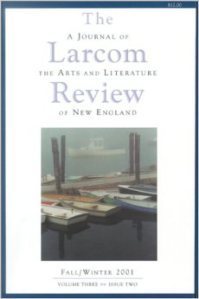 Review (and gave me my first full-length short story publication credit for “The Taste of Winter“) as well as several mystery novels, Susan says she and her co-editor didn’t know how to run a press, and she describes how they learned. She then went on to co-found Level Best Books, which is going strong even today, although under new management (including Barb!). Her essay ends with a paragraph that very much resonates with me: “My philosophy was, and still is, that if there’s something you want to do, just throw yourself at it. Whatever happens, you’ll know more than when you started, you’ll be closer to your goal, and your discoveries will open unexpected doors.” I agree, and have done this myself a number of times in my life.
Review (and gave me my first full-length short story publication credit for “The Taste of Winter“) as well as several mystery novels, Susan says she and her co-editor didn’t know how to run a press, and she describes how they learned. She then went on to co-found Level Best Books, which is going strong even today, although under new management (including Barb!). Her essay ends with a paragraph that very much resonates with me: “My philosophy was, and still is, that if there’s something you want to do, just throw yourself at it. Whatever happens, you’ll know more than when you started, you’ll be closer to your goal, and your discoveries will open unexpected doors.” I agree, and have done this myself a number of times in my life.
 Sherry: How could I not pick Hallie Ephron’s essay “I Get My Best Ideas at Yard Sales”? Sure I wanted to read it because I’m writing the Sarah Winston Garage Sale Mystery series but I loved Hallie’s novel Never Tell A Lie. The idea for the story came to her at a yard sale. I’ve also been in a number of classes taught by Hallie so I knew I’d find some good advice in her essay. Reading that a writer like Hallie gets stuck makes me feel better when I get stuck. Getting stuck happens it’s what you do about it that matters. Hallie says this: I’ve now written nine novels. My best ideas for getting unstuck seem to come to me when I’m frying chicken, or taking a shower, or driving, or going to a yard sale. In other words when I can’t write. So my advice for thinking your way out of a plot hole is this: After you’ve tried every technique in the book for writing your way out of one, step away from the keyboard.
Sherry: How could I not pick Hallie Ephron’s essay “I Get My Best Ideas at Yard Sales”? Sure I wanted to read it because I’m writing the Sarah Winston Garage Sale Mystery series but I loved Hallie’s novel Never Tell A Lie. The idea for the story came to her at a yard sale. I’ve also been in a number of classes taught by Hallie so I knew I’d find some good advice in her essay. Reading that a writer like Hallie gets stuck makes me feel better when I get stuck. Getting stuck happens it’s what you do about it that matters. Hallie says this: I’ve now written nine novels. My best ideas for getting unstuck seem to come to me when I’m frying chicken, or taking a shower, or driving, or going to a yard sale. In other words when I can’t write. So my advice for thinking your way out of a plot hole is this: After you’ve tried every technique in the book for writing your way out of one, step away from the keyboard.
Jessie: I really liked the essay Wabi-Sabi Writing by Kylie Logan. Basically, it spoke about mindfulness and the appreciation of things that are fleeting and imperfect. Everything about that idea spoke to me as a writer and as a person who tries to find joy in the little things that make up a life. This attitude of acceptance and pleasure in the unfolding of what is, into what will be, is extraordinarily freeing on so many levels. It is exactly how I keep my inner editor at bay and how I convince myself to take risks of all kinds. I was delighted to find there was actually a name for that approach and that it wasn’t just a form of sloth. Ever since I read Kylie’s essay I have been chanting wabi-sabi to myself as I sit down to write, to cook or even to tidying the house. Thanks, Kylie!
Julie: I love this book. I am thrilled to be part of it, but would love it no matter what. I think there is an essay for every mood, and every writer’s need. It is really hard to pick one, but that is the task. I’m going to chose Diane Vallere‘s “What Are You Looking For?” It is about searching, and exploring the unexpected paths. Terrific essay. Great book. And fabulous legacy project for the wonderful Hank Phillippi Ryan.
Readers, have you read any of the essays? Do you have a favorite?
Filed under: Wicked Wednesday Tagged: #60secrets, Clea Simon, Diane Vallere, Elaine Will Sparber, Hallie ephron, hank phillippi ryan, Henery Press, Kylie Logan, Larcom Review, Level Best Books, Lori Roy, Never Tell A Lie, Sarah Winston Garage Sale Mystery, Susan Oleksiw, wabi-sabi, Writes of Passage, yard sales

November 4, 2014
Back to School
By Liz, impatiently counting down the minutes until Crime Bake this weekend
Recently, I was asked to speak to a group of high school kids who were interested in writing. I have to admit, when I first got the request I was hesitant. I remembered high school well, and I know how tough that audience can be. But in the spirit of “Do something every day that you’re afraid of,” (who said that, again?) I decided to go for it.
I spent a lot of time prepping for this one. The organizer told me to talk about my background, how I got started writing, the writing process – all the basics. I could handle that. I chose some of my favorite books about writing to show them some of the best resources available.
But I wasn’t convinced that would be enough. I wanted to give them something meaningful, something they could truly take away and use.
So I noodled it. And then it hit me one night during my ride home from work – I needed to tell these kids the things they shouldn’t believe. The things people tell kids who express an interest in writing. The things writers tell people interested in writing. All the myths that will derail an aspiring creative.
I spent a lot of time letting other people’s beliefs in writing, and making a living as a writer, fill me with uncertainty. My parents were proud of my writing abilities, yet it was hard for them to imagine just anyone achieving the appropriate level of “productive member of society” by writing books. I mean, Danielle Steel and Stephen King were the exceptions, right? So they nudged me towards teaching.
I never bit that hook, but spent plenty of time convincing myself that I needed “sensible” jobs. I let a lot of opportunities pass me by. Despite the fact that I’d sold the first short story I ever wrote as well as a few essays, I still didn’t have the confidence that I could make the writing thing work. When I finally decided to get on with my purpose, I became a reporter. That job inspired me, raised my confidence level and ultimately gave me a sense of what I could do with a pen.
From that moment on, I still worked “sensible” jobs, but they always related to writing. I had to remind myself of it daily, but it was true – I was making a living as a writer. True, not through books – yet – but I believed it would come. And it has.
A lot of that was due to the work I did with Julia Cameron‘s The Artist’s Way. Cameron has helped people all over the world discover – and more importantly, recover – their creativity. The exercises in this book, and the ongoing exercises, like morning pages, have truly saved my creative life. I hope these kids don’t yet need it, but if and when they do, now they might remember where to find the inspiration they need to move forward and fulfill their dreams.
So that was my message to the kids. Listen to your heart. Write what you want. Don’t ever let anyone tell you that writing won’t put food on your table. You probably won’t be a famous, well-paid author right out of the gate, but there are other ways to make money writing while you hone your craft. Tune everyone else out, and tune into yourself. Find and take opportunities. Open your mind.
And guess what? The session was a hit. The kids who came were mostly very serious about their writing, soaking up information and asking a lot of questions. I left feeling good about what I’d offered them. If I reached one kid who was having doubts about their career choice and inspired him or her to keep going, then I was successful.
Next time I’m asked to do an event for high schoolers, I’ll be quick to say yes.
Filed under: Liz's posts Tagged: high school, inspire, Julia Cameron, The Artist's Way

November 3, 2014
How Much is Too Much?
by Sheila Connolly
I’ve already written about “stuff”—the accumulation of several generations of treasured objects, plus all the things I’ve added over a rambling lifetime (was it seven states? Or eight?).
 But maybe it really is a character trait of mine, this adding more and more of everything. As you may have noticed, I write multiple series. Four, in fact, although the latest one wasn’t planned—I had written a standalone ebook that I self-published last year (in an unfamiliar genre, paranormal romance), and it sold nicely, so my agent said, why not write a sequel? So I did. This is how I backed into writing a fourth series. Yes, there will be at least one more, in addition to the three for Berkley Prime Crime. I guess I shouldn’t wonder why some people question my sanity.
But maybe it really is a character trait of mine, this adding more and more of everything. As you may have noticed, I write multiple series. Four, in fact, although the latest one wasn’t planned—I had written a standalone ebook that I self-published last year (in an unfamiliar genre, paranormal romance), and it sold nicely, so my agent said, why not write a sequel? So I did. This is how I backed into writing a fourth series. Yes, there will be at least one more, in addition to the three for Berkley Prime Crime. I guess I shouldn’t wonder why some people question my sanity.
Recently I was on a public panel of writers and I was asked (not for the first time), how do you keep all your characters straight? In a way it seems an odd question, because I usually say that they’re all different people (and yes, after you’ve lived with them for a while, they seem like real people to a writer—you find yourself saying to someone, “but she wouldn’t do that!”). To some extent that was planned: Meg is a thirty-something former banker now running an apple orchard in a rural area, Nell is an almost-forty museum administrator in a big city, and Maura is a blue-collar twenty-something pub owner in Ireland. I can’t imagine how I could come up with one standard character, tweak a few personality traits, change her hair color, and drop her into three such different roles.
Of course, each of these women is surrounded by friends and colleagues and the occasional villain. How do I keep them in order? How do I even manage to avoid using the same names for them? (Sound of crazed laughter.) That’s harder, I’ll admit, especially if I have favorite names of friends or relatives, or former bosses I really want to slam for being jerks, and I want to fit them in somewhere. No, I don’t keep tidy spreadsheets or character profiles of each person in every book, and I think it’s kind of late to start.
But again, I say that even those characters are different people. Maybe they’re modeled on a real person, or maybe I made them up from scratch (I sneaked my Ideal Man in there somewhere, and I’ve pointed him out to my husband, hint, hint). But they aren’t just placeholders (the Best Friend, the Love Interest, the Unsuspected Killer)—I try to make them three-dimensional.
Or in the case of my paranormal heroine Abby, maybe four-dimensional, since she sees dead people. (Do I? Not yet, but I’m hoping. Do I know people who have or who do? Maybe.) But that sets her apart from my other protagonists. On the other hand, what links her to the others is how she deals with unexpected and difficult events and circumstances. In her case it’s seeing ghosts; the others have faced job losses, false accusations of crimes, thefts, fires, plagues of insects, unanticipated romances, and more than a few dead bodies. If they share any similarity, it’s because I hope I’ve drawn them as strong, intelligent women who can use their brains to figure things out and move forward with their lives. And I’m happy to count them as my friends, even if they’re imaginary.
Filed under: Uncategorized Tagged: sheila connolly

A Book Party
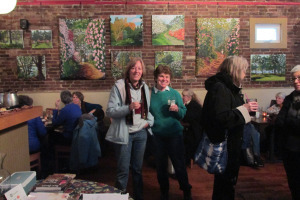 Edith, not yet adjusted to the time change
Edith, not yet adjusted to the time change
Quick report on the book party I held yesterday. I’d never had a launch party for ‘Til Dirt Do Us Part when it released at the end of May this year. The book opens at a farm to table dinner in the fall that I modeled on one that I attended at a local farm. That real dinner was cooked by the chefs at my local bistro, and they kindly gave me a version of one of their recipes to use in the book. So where better to hold a book party than at Phat Cats Bistro?
 The date that seemed to work best for them was yesterday afternoon (which also happened to be my birthday). I paid for platters of appetizers, including the Sweet Potato Empanadas that are included in the book, and invited everyone I knew. Despite miserably cold and wet-snowy weather, we got a good turnout. The restaurant sold a bunch of drinks and I sold a bunch of books. I was also able to turn a few friends onto the restaurants, so hopefully they’ll see a hit with some new customers.
The date that seemed to work best for them was yesterday afternoon (which also happened to be my birthday). I paid for platters of appetizers, including the Sweet Potato Empanadas that are included in the book, and invited everyone I knew. Despite miserably cold and wet-snowy weather, we got a good turnout. The restaurant sold a bunch of drinks and I sold a bunch of books. I was also able to turn a few friends onto the restaurants, so hopefully they’ll see a hit with some new customers.
I also offered a free raffle to win naming rights for a character in Compost Mortem, the  fourth Local Foods mystery, which I am writing now. My young friends James and Birima helped on that, and James also gave everyone present a copy of my new business card. I was surprised that people seemed to want to buy raffle tickets – maybe next time I’ll sell them!
fourth Local Foods mystery, which I am writing now. My young friends James and Birima helped on that, and James also gave everyone present a copy of my new business card. I was surprised that people seemed to want to buy raffle tickets – maybe next time I’ll sell them!
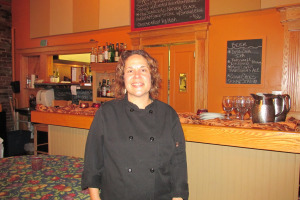
Chef Christine Johnson at Phat Cats Bistro.
My wonderful sons were in town and both came along, and I was able to introduce a number of writers and readers to each other. Diane Weaver, a mystery fan who won the right have her own name on a character in ‘Til Dirt Do Us Part in an auction a couple of years ago showed up, too.
All in all a great afternoon.
Filed under: Edith's posts Tagged: 'Til Dirt Do Us Part, Phat Cats Bistro

October 31, 2014
Boo! Best, Most Wicked Halloween
 Happy All Hallow’s Evening — thus the contraction to Hallowe’en. This is the time when we use humor and ridicule to confront the power of death. The ancient Celts believed that during this liminal time, when darkness overtakes the world (at least in the northern reaches of the northern hemisphere), the spirits can more easily come into our world and are particularly active.
Happy All Hallow’s Evening — thus the contraction to Hallowe’en. This is the time when we use humor and ridicule to confront the power of death. The ancient Celts believed that during this liminal time, when darkness overtakes the world (at least in the northern reaches of the northern hemisphere), the spirits can more easily come into our world and are particularly active.
How do you ward off the spirits? What’s your best Halloween memory? Best costume? Or maybe your worst costume fail…
Barb: As everyone probably knows by now, I am not a Halloween lover. However, that doesn’t mean I don’t have some happy memories.
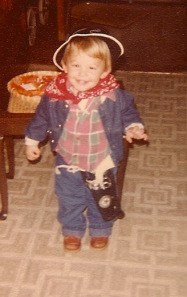
My son Rob, in an early Halloween costume.
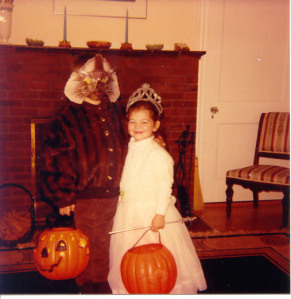
Son Rob and daughter Kate. Costumes were always homemade. The werewolf is wearing an old mink sweater of my grandmother’s, the princess her aunt’s confirmation dress.
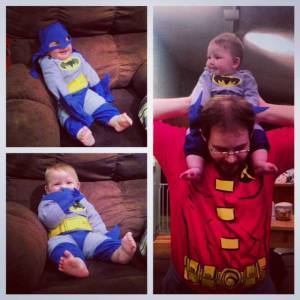
Last Halloween. Batman and Robin. My baby and his baby.
Liz: While my Halloween-junkie lifestyle offers many options for the most memorable, I do love dressing up the doggies and taking them to Salem. They are always huge hits, and they love the attention. It’s actually how they ended up with Facebook pages – the first time Shaggy went to Salem when she was Only Dog, people loved her so much they wanted to be able to connect with her again. A woman on the street actually had gave me the idea when she asked if she could find her on Facebook. And a star was born….
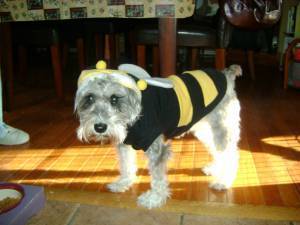
Shaggy as a bumblebee – I don’t think this was her favorite costume!
And then Finny decided he wanted to get in on the act, so here he is as a pumpkin!
 Julie: My sister Kristen has a November 1 birthday, so she usually had Halloween themed parties. I remember one year when my mother made us all wear blindfolds, and then played a witch who handed around ingredients for a brew, including worms (cold spaghetti) and eyes of newt (peeled grapes). It was great. I also remember being little little, and having a nightgown that doubled as my Halloween costume. I was an angel, natch. As an adult, I loved my nieces’ first Halloween. They were 11 months old, and we got them little fleece outfits–one was a giraffe, the other was a tiger. I still smile when I see the picture. PS, I love that Liz takes the dogs to Salem.
Julie: My sister Kristen has a November 1 birthday, so she usually had Halloween themed parties. I remember one year when my mother made us all wear blindfolds, and then played a witch who handed around ingredients for a brew, including worms (cold spaghetti) and eyes of newt (peeled grapes). It was great. I also remember being little little, and having a nightgown that doubled as my Halloween costume. I was an angel, natch. As an adult, I loved my nieces’ first Halloween. They were 11 months old, and we got them little fleece outfits–one was a giraffe, the other was a tiger. I still smile when I see the picture. PS, I love that Liz takes the dogs to Salem.

Crime Bake 2012. From left: Julie, Sherry, Edith, Kathy Whelan, Liz
Edith: I love, love, love Hallowe’en. Love costumes – anybody who has seen me at Crime Bake banquets knows that. And I used to host an annual Halloween party, but haven’t in years. I sewed whatever costume my sons wanted every year, starting with Allan at age four saying he wanted to be a red-winged blackbird. Done. John David wanted to go as Aladdin? No problem. (If only I could easily find those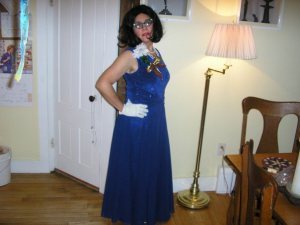 pictures…) The last party I went to, hosted by a Quaker friend, had a prom theme. Loved putting on my black wig, my glasses from eighth grade, white gloves, and a plastic corsage. Why, yes, the wig and glasses do get repurposed quite often (see Crime Bake photo).Take that, dark spirits.
pictures…) The last party I went to, hosted by a Quaker friend, had a prom theme. Loved putting on my black wig, my glasses from eighth grade, white gloves, and a plastic corsage. Why, yes, the wig and glasses do get repurposed quite often (see Crime Bake photo).Take that, dark spirits.
Jessie: My beloved sister and I have built a Halloween tradition that I treasure. She only lives a few miles from me but her home is out in the country. I live in a tiny village custom made for trick-or-treating. Every year she brings her children and a pot of soup and some sort of bread to my house. I make more soup and bread and provide my own batch of kids. Our husbands accompany all the cousins out trick or treating and my sister and I pass out candy and visit with each other. When our cold and tired wanderers return home we make sure they warm up with some hot soup before they begin evaluating their loot and haggling with each other over trades.
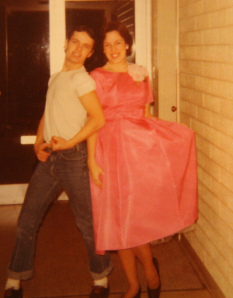 Sherry: I love getting dressed up too. Some of our best Halloweens were while we lived on Air Force Bases. A bunch of us would sit outside — perhaps with a glass of wine — and the kids just kept coming and coming. It was like a parade. I remember one unsuspecting general, whose wife was out of town, didn’t know how many kids would show up. He handed out all the candy, turned to cans of soda and finally cans of soup until he finally gave up and turned off his light.
Sherry: I love getting dressed up too. Some of our best Halloweens were while we lived on Air Force Bases. A bunch of us would sit outside — perhaps with a glass of wine — and the kids just kept coming and coming. It was like a parade. I remember one unsuspecting general, whose wife was out of town, didn’t know how many kids would show up. He handed out all the candy, turned to cans of soda and finally cans of soup until he finally gave up and turned off his light.
Filed under: Group posts Tagged: Air Force Bases, costume, costumes, Crime Bake, Halloween, Salem, Samhain

October 30, 2014
Everything Has Something Good in It
by Barb on yet another lovely New England fall day
I just bought this collage created by my fellow Level Best co-editor, Kat Fast.
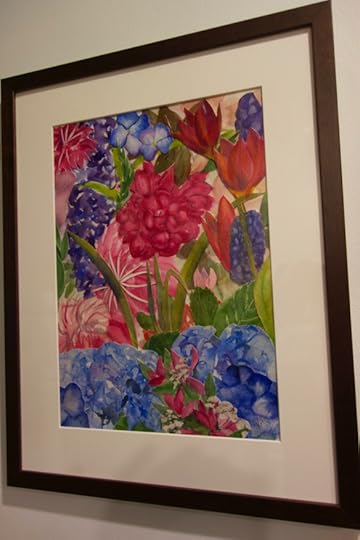
Artist: Kat Fast
Watercolor with glaze
I blogged about Kat (or Kathy as I call her, or Katherine as she appears on the covers of the Level Best anthologies) just the other day, when we wrote about the people in our lifeboats.
I first saw the collage at a one woman show Kat had at the Weston Council on Aging, a group she’s been very involved with as a teacher and a volunteer. I was immediately taken with the picture aesthetically and emotionally. I loved its density, composition and vibrant colors. I loved how it contained the promise of spring and summer. And, it doesn’t hurt that I also believe in my core that anything with hydrangeas in it can’t be all bad.
But when Kat explained how the piece was made, I resonated with it intellectually as well. It came out of a class with one of her teacher/mentors who believed, “Everything has something good in it.” A painting that is a failure will always contain at least one successful element. One flower, or one tiny corner, or even just a streak of the perfect color green.
So she had them cut up some of those failed pieces and arrange the successful elements in a new composition.
The result, I think, is spectacular.
What an important lesson that is for all of us who create.
Just two days ago on the blog, Kathy Lynn Emerson explained how surrendered after 100 pages of a failed Elizabethan thriller, but then was able to carve two short stories out of it.
The ideas and images that speak to us are the ideas and images that speak to us, and sooner or later, if we keep at it, we will find a way to express them.
 The reason I call Kat “Kathy” is because we actually met, I hate to even think, it must be close to thirty years ago when we both worked at a company called Information Mapping. I left in the mid-90s and we lost touch, as people did in those pre-Facebook days. Then, one day, I was walking down the street in Harvard Square and there she was. “What are you up to these days?” she asked. “Oh,” I said, “I’m in this writers group. I’m writing a mystery.” “Really?” Kathy said. Because it turned out she was, too. She joined our group, and the rest is history. One of those serendipitous moments that changes several people’s lives.
The reason I call Kat “Kathy” is because we actually met, I hate to even think, it must be close to thirty years ago when we both worked at a company called Information Mapping. I left in the mid-90s and we lost touch, as people did in those pre-Facebook days. Then, one day, I was walking down the street in Harvard Square and there she was. “What are you up to these days?” she asked. “Oh,” I said, “I’m in this writers group. I’m writing a mystery.” “Really?” Kathy said. Because it turned out she was, too. She joined our group, and the rest is history. One of those serendipitous moments that changes several people’s lives.
At the opening of her show, Kathy spoke wonderfully, tying up into a tidy package a life she’s quick to agree has many disparate elements. She recognized each of her art teachers and told the central truth she had learned from each one, which I found very moving.
She also managed to tie in her editorship at Level Best via her story, “The Black Dog,” in Best New England Crime Stories 2012: Dead Calm, about an amateur artist, “not paying full fare at the movies” herself, who is initially rejected, then embraced by three elderly professionals in an advanced watercolor class. “The Old Cats” as they dub themselves, worry about housing and healthcare and the hundreds of paintings their children will eventually need to dispose of–until they come up with a plan that solves all those problems in one go and only depends on a little bit of fraud.
So here’s to the crafty old cats, and the mentors, and the little bit of good in all of our failures.
Filed under: Barb's posts Tagged: Best New England Crime Stories: Dead Calm, Kat Fast, Kathy Lynn Emerson

October 29, 2014
Stick with the Wickeds Contest Winner!
Drum roll please…….
And the winner of the Stick with the Wickeds Contest is: Dru Ann Love!
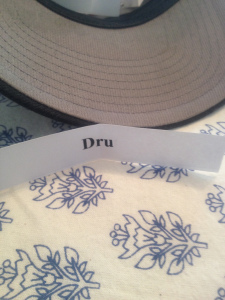 Dru Ann has won an all expenses paid trip for her image to accompany the Wickeds on a stick to the New England Crime Bake. We are delighted to have her joining us at the conference that started it all for the Wickeds!
Dru Ann has won an all expenses paid trip for her image to accompany the Wickeds on a stick to the New England Crime Bake. We are delighted to have her joining us at the conference that started it all for the Wickeds!
Thanks to everyone who participated in the contest!
Filed under: Conferences, Contests, Jessie's posts Tagged: contests, Crime Bake, Crime writing conferences, Stick with the Wickeds

October 28, 2014
Welcome Kaitlyn Dunnett/Kathy Lynn Emerson
by Barb, who confesses to being wildly inspired by Kathy Lynn
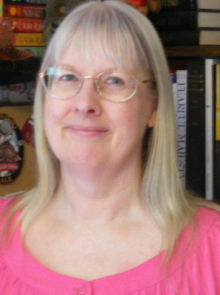 Gentle readers, our guest today is Kathy Lynn Emerson, who, as Kaitlyn Dunnett, writes the Liss MacCrimmon Mysteries set in Moosetookalook, Maine. As it happens, today is the publication day for Ho-Ho-Homicide, the eighth book in the series, and Kathy Lynn’s 50th traditionally published book!
Gentle readers, our guest today is Kathy Lynn Emerson, who, as Kaitlyn Dunnett, writes the Liss MacCrimmon Mysteries set in Moosetookalook, Maine. As it happens, today is the publication day for Ho-Ho-Homicide, the eighth book in the series, and Kathy Lynn’s 50th traditionally published book!
In honor of this amazing achievement, Kathy Lynn has offered to give a free copy of Ho-Ho-Homicide to one lucky commenter below.
Kathy Lynn and I blog together on the Maine Crime Writers blog. She really is from Maine, and she and her husband run a Christmas tree farm and Ho-Ho-Homicide is set on a Christmas tree farm. We thought this launch was a great excuse to have a nice chat.
 About the book: In Ho-Ho-Homicide, when an old friend asks Liss MacCrimmon Ruskin and her husband Dan to spend a week on a Maine Christmas tree farm, evaluating its potential as a profitable seasonal business, Liss thinks they’re in for an idyllic vacation. Boy is she wrong! Between a missing person, an unidentified body, a mysterious maze, and a series of “accidents” there’s no time to relax. To add to the pressure, the deadline to open a cut-your-own operation at the Christmas tree farm for the current season is fast approaching. And then there’s that other matter, the very personal one that Liss hoped she and Dan would have time to talk about once they were away from their usual busy routine. The novel is set five years after the end of the last entry in the series (Vampires, Bones and Treacle Scones). Liss hasn’t been involved in solving a single murder in the interim and is hoping her luck will hold. Not a chance!
About the book: In Ho-Ho-Homicide, when an old friend asks Liss MacCrimmon Ruskin and her husband Dan to spend a week on a Maine Christmas tree farm, evaluating its potential as a profitable seasonal business, Liss thinks they’re in for an idyllic vacation. Boy is she wrong! Between a missing person, an unidentified body, a mysterious maze, and a series of “accidents” there’s no time to relax. To add to the pressure, the deadline to open a cut-your-own operation at the Christmas tree farm for the current season is fast approaching. And then there’s that other matter, the very personal one that Liss hoped she and Dan would have time to talk about once they were away from their usual busy routine. The novel is set five years after the end of the last entry in the series (Vampires, Bones and Treacle Scones). Liss hasn’t been involved in solving a single murder in the interim and is hoping her luck will hold. Not a chance!
Barb: Oh, I didn’t realize. I love it when series take a leap forward in time. (Or when they go back and fill in a blank space.) Now I really can’t wait to read this. Ho-Ho-Homicide is your fiftieth book and the eighth book in your Liss MacCrimmon Mystery series. We have several Wicked Cozies who are working on their fourth books and one on her third. What advice would you give us for keeping a series fresh?
Kathy Lynn: What works best for me is to take a break and write something totally different in between each of Liss’s adventures. By the time I reach a good stopping point in that project, I usually have a stack of notes about new ideas to incorporate into the next Liss MacCrimmon mystery. This plan falls apart, of course, if deadlines are too close together. I try to give myself deadlines way in advance of the real ones so that I have a sort of built-in buffer zone.
Barb: Your fifty-first book will come out in November in the UK and in March in the US. Tell us about Murder in the Queen’s Wardrobe, and why the UK first?
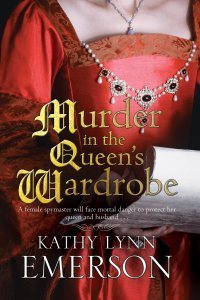 Kathy Lynn: Murder in the Queen’s Wardrobe is the first of the Mistress Jaffrey Mysteries set in Elizabethan England. It is also the eleventh novel to use characters from the Face Down series (Face Down in the Marrow-Bone Pie, the first, came out in 1997) That series featured Elizabethan gentlewoman, herbalist and sleuth Susanna, Lady Appleton, an expert on poisonous plants. Rosamond Jaffrey is the illegitimate daughter of Lady Appleton’s late, unlamented husband, Sir Robert. The original series often featured a spy subplot, and in this new one Rosamond is asked to enter the household of the queen’s cousin, Lady Mary Hastings, who is being offered up as a bride for Ivan the Terrible of Russia, to keep an eye on things for the queen’s spy master, Sir Francis Walsingham. Despite the espionage angle, this mystery still fits neatly into the historical cozy subgenre. As for the earlier UK publication, that’s because my publisher, Severn House, is based in the UK. They have an amazing list of American and British authors, including my fellow Mainer, Dorothy Cannell.
Kathy Lynn: Murder in the Queen’s Wardrobe is the first of the Mistress Jaffrey Mysteries set in Elizabethan England. It is also the eleventh novel to use characters from the Face Down series (Face Down in the Marrow-Bone Pie, the first, came out in 1997) That series featured Elizabethan gentlewoman, herbalist and sleuth Susanna, Lady Appleton, an expert on poisonous plants. Rosamond Jaffrey is the illegitimate daughter of Lady Appleton’s late, unlamented husband, Sir Robert. The original series often featured a spy subplot, and in this new one Rosamond is asked to enter the household of the queen’s cousin, Lady Mary Hastings, who is being offered up as a bride for Ivan the Terrible of Russia, to keep an eye on things for the queen’s spy master, Sir Francis Walsingham. Despite the espionage angle, this mystery still fits neatly into the historical cozy subgenre. As for the earlier UK publication, that’s because my publisher, Severn House, is based in the UK. They have an amazing list of American and British authors, including my fellow Mainer, Dorothy Cannell.
Barb: Not only are you published in romance, mystery, historical fiction and historical mystery, you also write short stories. Tipping it a bit, your story, “The Blessing Witch” will appear in Best New England Crime Stories 2015: Rogue Wave. The story takes place in the sixteenth century and is about a woman who may be a witch, but who solves a mysterious death using other abilities. Where did “The Blessing Witch” come from?
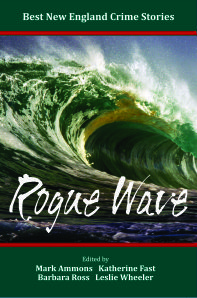 Kathy Lynn: Okay—confession time. This was supposed to be a scene in an “Elizabethan thriller” my agent suggested I write. I tried. I really did. But I’m a cozy writer, not a thriller writer. I developed the characters and their background, wrote about 100 pages, and realized I didn’t have a clue where I was going with the story. Besides, I really wanted to go write what became Murder in the Queen’s Wardrobe. So, never being one to waste anything, I looked for pieces of that 100 pages that could be recycled and as a result rewrote two small sections into short stories. I’ve also set aside a larger chunk that, considerably revised, may just reappear as a chapter or two in the third Mistress Jaffrey mystery.
Kathy Lynn: Okay—confession time. This was supposed to be a scene in an “Elizabethan thriller” my agent suggested I write. I tried. I really did. But I’m a cozy writer, not a thriller writer. I developed the characters and their background, wrote about 100 pages, and realized I didn’t have a clue where I was going with the story. Besides, I really wanted to go write what became Murder in the Queen’s Wardrobe. So, never being one to waste anything, I looked for pieces of that 100 pages that could be recycled and as a result rewrote two small sections into short stories. I’ve also set aside a larger chunk that, considerably revised, may just reappear as a chapter or two in the third Mistress Jaffrey mystery.
Barb: What are you working on now?
Kathy Lynn: I’m taking a break before revising the current draft of the second Mistress Jaffrey mystery (Murder in the Mercery) and the outline for Liss #10 (tentatively titled Kilt on the 4th of July) isn’t due until December 1st, so I’m spending a little time on shorter fiction. In the past, it always seemed to take me longer to whip a short story into shape than it did to write an entire novel, but since “The Blessing Witch” turned out so well, I’ve been revising a story I wrote a long time ago (would you believe 1987?), finishing another story I started in March 2013 that stalled on page six, finishing a third I began earlier this year, and working on a fourth that uses a secondary character who appears in Liss #9 (the 2015 book) and who might one day have the potential to become the sleuth in a series of her own.
Yes, I am a compulsive writer. No, I have no “real” life. When I’m not writing fiction I’m working on my online “A Who’s Who of Tudor Women” or expanding the family genealogy or doing jigsaw puzzles or reading . . . unless it’s a Monday or Tuesday evening. Mondays I’m in front of the TV watching Dancing with the Stars and Castle. Tuesdays it’s Marvel: Agents of Shield.
Readers, please join me in congratulating Kathy Lynn on the achievement of her 50th published book, and remember one lucky commenter gets a free copy.
Bio: Kathy Lynn Emerson writes in a variety of genres and under several names. As Kathy Lynn Emerson, she is best known for two historical mystery series. In the Face Down series, featuring Susanna, Lady Appleton, sixteenth century gentlewoman, herbalist, and sleuth, the most recent entry is Face Down O’er the Border (2007). The Diana Spaulding 1888 Mysteries feature a late nineteenth-century American journalist. Lethal Legend (set in Maine) follows Deadlier than the Pen (set in Maine), Fatal as a Fallen Woman (set in Colorado), and No Mortal Reason (set in rural New York State). As Kaitlyn Dunnett, Kathy pens the contemporary Liss MacCrimmon Scottish-American Heritage Mysteries, set in the fictional Maine town of Moosetookalook. As Kate Emerson, Kathy writes non-mystery historical novels set in the sixteenth century. Kathy lives in Wilton, Maine with her husband and assorted cats. She is also the author of the Agatha-award-winning nonfiction book, How to Write Killer Historical Mysteries: The Art and Adventure of Sleuthing Through the Past.
Kathy returns to historical mysteries and using her own name with a spin-off of the Face Down series featuring Lady Appleton’s late husband’s illegitimate daughter, Rosamond, as the sleuth. The first entry, Murder in the Queen’s Wardrobe, will be in stores in the U.S. in the spring of 2015. It is set in 1582-3. She is currently working on the second book in this series for publication in 2016.
Kathy also maintains a series of mini-biographies of sixteenth-century women—over 2000 of them! To find out more about A Who’s Who of Tudor Women, click on the quill:
Kathy and her husband Sandy live on a Christmas tree farm, which means she doesn’t get much writing done between Thanksgiving and Christmas Eve. You can visit there by going to Mystic Valley Christmas Tree Farm. Sandy is also a custom woodworker, specializing in jigsaw puzzle tables in various sizes. The rest of the family consists of three cats, Bala, Nefret, and Feral.
Filed under: Guest posts Tagged: Best New England Crime Stories: Rogue Wave, Christmas tree farm, Ho-Ho-Homicide, Maine writers, Murder in the Queen's Wardrobe, The Blessing Witch

October 27, 2014
Branding Multi Everything
Edith, north of Boston
As most of you know, I now write under three names: my birth name, Edith Maxwell, which is on the Local Foods Mysteries and my short stories. My Lauren Rousseau Mysteries pseudonym, Tace Baker (who also has her own web site). And my Country Store Mysteries identity, Maddie Day. I have an historical series I want to sell, too.
I wanted to be sure my web site reflected all these identities and all these series, and my previous one wasn’t cutting it. The banner was made up of my book covers, but that meant it had to change every time a new book came out, and there were other issues. I started drafting a new site a couple of months ago, but wondered what I could use for a banner, for a common theme. 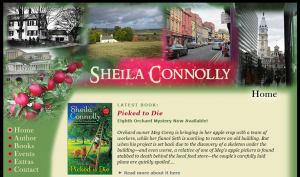
So, as often in the mystery world, I went looking to my friends for help. I checked out Sheila Connolly‘s new site, since she writes three series, although all under the same name. Doesn’t it have a great look?
 I looked at Catriona McPherson‘s site – she writes one series and one line of standalones, but also all under a single name. I love those crows.
I looked at Catriona McPherson‘s site – she writes one series and one line of standalones, but also all under a single name. I love those crows.
And I checked out Leslie Budewitz‘s 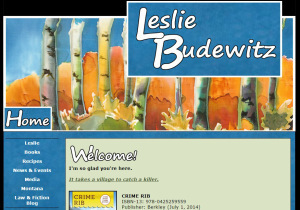 site – she writes two series under one name. Isn’t that an evocative painting?
site – she writes two series under one name. Isn’t that an evocative painting?
What I saw was a unifying graphic. In the latter two, the art doesn’t necessarily represent the settings of the book, but rather the author. In Sheila’s, there are pictures of the places where her series are set: Ireland, Philadelphia, and small-town Massachusetts.
I considered hiring an artist to create a banner for me, either with pictures or art. Then I looked at the wall in my office and realized I had it right there.
My dear friend Jennifer Yanco (a published non-fiction author) commissioned Boston-area artist Jackie Knight to paint a picture for my sixtieth birthday a couple of years ago. It’s titled “Edith’s World.” It’s mysterious and imaginative and gorgeous. It doesn’t look like any one of my series or names, but instead represents me and my work. Right?
So I took a horizontal slice of it and made it the banner for my web site. It shows up on every page. I also used it on my Facebook Author page.
And then, because I could, I made up business cards, note pads, and even a few mugs. 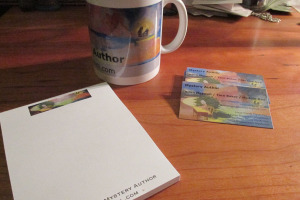
 So I have my brand, I have my new web site, and I have a lovely connection to the friend I have known and journeyed with for almost forty years!
So I have my brand, I have my new web site, and I have a lovely connection to the friend I have known and journeyed with for almost forty years!
The pen names are on the web site on each series’ page and on the business cards, in case anybody needs to find one of my selves.
Heck, maybe tee shirts are next…
Readers: Can you find other examples of multi-name multi-series web sites you like? Any suggestions for my new site? (Be brutal!)
Filed under: Edith's posts Tagged: branding, Catriona McPherson, Jackie Knight, Leslie Budewitz, sheila connolly, Tace Baker

October 24, 2014
Ask the Editor: Narielle Living
Edith: Writing furiously on a rainy fall day
I’m so pleased to welcome Narielle Living for our next Ask the Editor spotlight. Narielle edited my second Lauren Rousseau mystery, Bluffing is Murder (out November 11!) for  Barking Rain Press, and I thought she did a careful, thoughtful job with it – no gratuitous changes, but a number of comments and questions that definitely improved the book.
Barking Rain Press, and I thought she did a careful, thoughtful job with it – no gratuitous changes, but a number of comments and questions that definitely improved the book.
What I didn’t realize until I invited her over is that Narielle is also a mystery author, and a member of Sisters in Crime! More on that at the end. Now talk to us about editing, Narielle
Area of Expertise: Fiction Editing
I would like to thank Edith Maxwell for the opportunity to guest on Wicked Cozy Authors today. I am honored to answer some questions and participate in this very fun blog.
How did you get started in this business?
I am currently an editor for three different traditional publishers, and I love my work. Each publisher that I work with is unique, but they all share one common element: fantastic writers. I love working on mysteries the most, but I also work with other genres.
My career began as a writer. I always felt it was important to know the rules of grammar and fully understand things like when to use a comma and when to use a semicolon. After all, if I wanted to break the rules I had to know them first, right? After the release of my second book I decided I wanted to be on the editing side of publishing as well. So, I enrolled in specific editing classes and earned a certificate in editing. However, I believe that education is an ongoing, lifelong process, and I continue to take at least four to five classes a year related to editing.
I strongly urge writers to take editing classes. This removes some of the mystery of the process and helps familiarize you with things like Chicago style versus AP style.
What are three things we should know about your area of expertise?
One thing that I want all writers to know about editors is this very simple fact: we love books. We love reading. We wouldn’t know what to do with ourselves if we couldn’t read (I shudder to even type those words, as I believe the Universe would end if I could not read a book). Because of that, when I am given a manuscript to edit, my goal is to polish it and make it shine. I want the book to be the best it can be. Too often I think writers have this idea that all editors want to change your work and make it their own. My goal is to intrude as little as possible into an author’s work and offer suggestions that make the manuscript better.
The next thing writers should realize is that there are different types of editing, including developmental editing, which addresses the big picture, copy editing, and proofreading. Each approach is different, so if you hire someone to proofread it’s important to know that a proofreader will not offer input about plot inconsistencies.
And finally, remember that it is okay to debate a point with your editor and offer up your opinion. In fact, we encourage that kind of discourse as long as the conversation remains respectful. Telling your editor that she is full of chop suey and clearly does not understand your vision tends to undermine a good working relationship. This is related to my first point: we want the same thing, and that is for your book to be as good as it can be.
What are the top five errors you see?
I definitely see some mistakes repeated in many manuscripts that come across my computer screen. Easily fixable, but common mistakes, so well worth pointing out.
First and foremost, please do not format your manuscript in anything other than Times 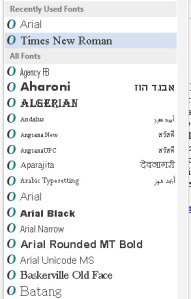 New Roman twelve point font. Do not put pictures in the manuscript. Do not use a hard return at the end of each line (we no longer rely on typewriters, remember?) and do not use the tab key for every single indent. If you don’t know how to format your manuscript then do some research or pay someone to help you. Something that simple could mean the difference between getting published or not getting published.
New Roman twelve point font. Do not put pictures in the manuscript. Do not use a hard return at the end of each line (we no longer rely on typewriters, remember?) and do not use the tab key for every single indent. If you don’t know how to format your manuscript then do some research or pay someone to help you. Something that simple could mean the difference between getting published or not getting published.
Many writers have a habit of “filtering” their writing. Simply put, filtering is a technique where the writing filters the action for the reader, removing the reader from any sense of immediacy. For example, a filtered sentence might look like this: She felt like she could cry. This sentence tells the reader what the character feels like, but does not put the reader in the midst of the action. A different way of writing this could be: Her throat tightened and tears threatened to spill. The second sentence puts the reader directly into the mind and heart of the character.

A writer’s dreaded but often needed imperative: kill your darlings
The next issue I often see is that of extra characters who are introduced but serve no purpose. If little Sally Sue has no reason to be in the story other than a cuteness factor, get rid of her. Or kill her off. Your readers will have a better story without extraneous people clogging up the flow.
In a similar vein, all dialogue and action must serve to move the story forward or create tension. I know that is a tall order, but paragraphs without purpose are incredibly boring to read and could cause your reader to abandon your book.
And finally, the one thing every writer has had to deal with: plot holes and inconsistencies. When you write a story it becomes so much a part of you that you sometimes forget to relate the entire story. Writers lose perspective and cannot always see the plot holes. Because of that, it’s a great idea to write the entire manuscript—don’t edit the first draft—put it away for a couple of weeks, then go back to page one and do a read-through. You’ll notice things you hadn’t seen before.
Final thoughts…
I don’t have any great ideas, but I would like to share some tips that have helped me through my career:
Stay true to your story but don’t be afraid to change it, either.
You do not have to do everything your critique group tells you to do with your manuscript.
Read as much as possible.
Write as much as possible.
Have fun as much as possible. You never know when the ride will come to an end.
Readers: Stop by the blog today and ask Narielle a question! And remember, today is the last day for your comment to enter you in the “Come to Crime Bake on a Stick” contest.
 Narielle Living is a freelance writer and editor based out of the tidewater area of Virginia. She is a regular contributor for the Williamsburg magazine Next Door Neighbors, and has written hundreds of do-it-yourself articles for online magazines. She is the author of the mysteries Signs of the South and Revenge of the Past, and co-authored Chesapeake Bay Karma—The Amulet. Her fiction also appears in the anthologies Chesapeake Bay Christmas Volume I, Chesapeake Bay Christmas Volume II, and Harboring Secrets. She edits both fiction and non-fiction, and loves helping other writers achieve their goals. A former massage therapist and healing arts educator, she studied Philosophy and Religion at Albertus Magnus College in New Haven, CT. Narielle is a member of the Chesapeake Bay Writers and Sisters in Crime, and when she is not editing she is working on writing more books. For information about her books or workshops, visit www.narielleliving.com.
Narielle Living is a freelance writer and editor based out of the tidewater area of Virginia. She is a regular contributor for the Williamsburg magazine Next Door Neighbors, and has written hundreds of do-it-yourself articles for online magazines. She is the author of the mysteries Signs of the South and Revenge of the Past, and co-authored Chesapeake Bay Karma—The Amulet. Her fiction also appears in the anthologies Chesapeake Bay Christmas Volume I, Chesapeake Bay Christmas Volume II, and Harboring Secrets. She edits both fiction and non-fiction, and loves helping other writers achieve their goals. A former massage therapist and healing arts educator, she studied Philosophy and Religion at Albertus Magnus College in New Haven, CT. Narielle is a member of the Chesapeake Bay Writers and Sisters in Crime, and when she is not editing she is working on writing more books. For information about her books or workshops, visit www.narielleliving.com.
Filed under: Ask the Expert Tagged: Barking Rain Press, Independent editor, Narielle Living, Signs of the South


